With photographs and essential facts, we’ll show the most popular owls in Alaska. Only trustworthy sources were used, and the data were double-checked with an Ornithologist.
Some of the most common owls in Alaska are the snowy owl, northern hawk owl, and western screech owl. Each type of owl has its own unique characteristics and habits. In this blog post, we will take a closer look at some of the most common owls found in Alaska, as well as their habits and habitats.
Most common owls of Alaska
Snowy Owls
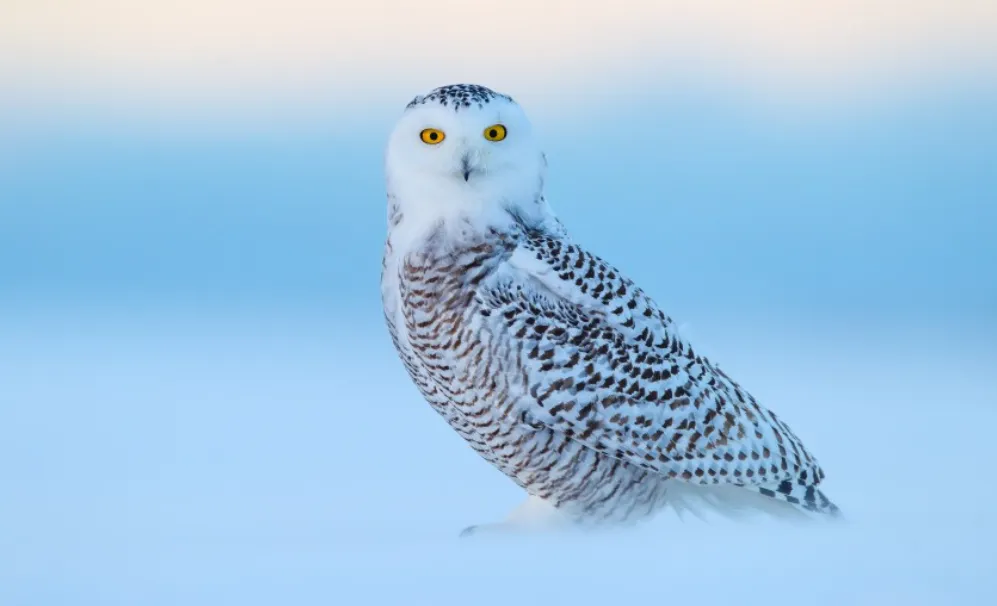
The snowy owl is the most common owl found in Alaska. It is a large, white bird with piercing yellow eyes. The snowy owl can be found in both rural and urban areas throughout the state. They prefer open habitats like tundra, prairies, and airports where they can find prey easily. Snowy owls eat small mammals like lemmings, voles, and hares. They also eat birds, fish, and insects. Snowy owls are usually solitary animals, but they may form small flocks during the winter. They are migratory birds and can be found in Alaska from October to April. The best time of year to see snowy owls is in the winter. They can be seen during the day and at night.
The snowy owl prefers to perch on high objects like fence posts, telephone poles, and trees.
Fun Fact: Snowy owls are the only birds of prey that can see ultraviolet light.

Northern Hawk Owl
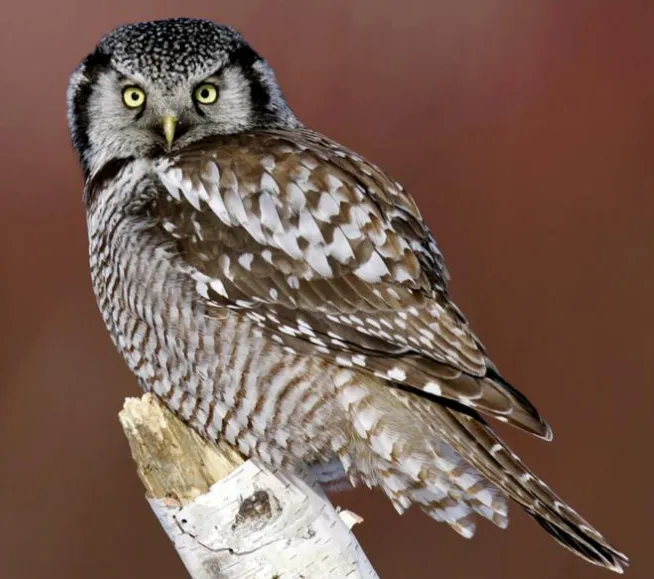
The Northern Hawk Owl is a medium-sized owl with brown and gray feathers. It has a distinctive black facial disk that helps to camouflage the owl in the dark forests of Alaska. The hawk owl is one of the most diurnal owls, meaning it hunts during the day. They can be found in coniferous forests throughout Alaska. Northern hawk owls eat small mammals, birds, and insects. They hunt by sitting and waiting on a perch until the prey is in sight. Then, they swoop down to catch their food.
Northern Hawk Owls do not build nests, so hawk owlets will live in the abandoned nest of another bird species or on a tree branch as soon as they are born. Although Northern Hawk Owls can breed at any time of year, they typically start breeding in March. Hawk owls will lay three to five eggs and incubate them for 24-30 days before the chicks hatch. At two weeks old, hawk owlets can fly but are still dependent on their parents for food.
Northern Hawk Owls have a very loud call that sounds like a hawk screaming. This call can be heard up to a mile away and is often used to communicate with other owls. The Northern Hawk Owl is considered a threatened species in Alaska, due to the loss of habitat from logging and development.
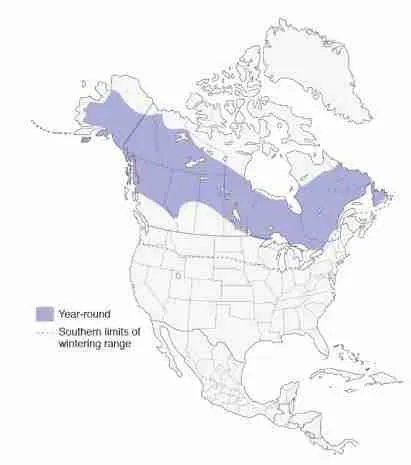
Western Screech Owl
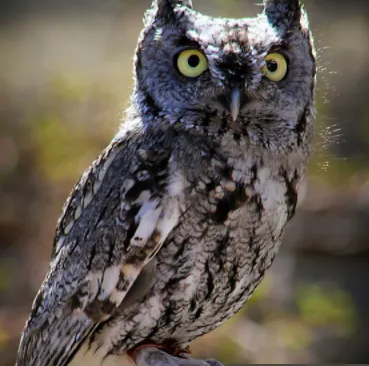
The Western Screech Owl is a small owl that can be found in western North America. This owl gets its name from the distinct screeching call it makes. The Western Screech Owl has brown and white feathers, and it is around nine inches tall.
This owl lives in forests, woodlands, and urban areas. It feeds on insects, rodents, and other small animals. The Western Screech Owl is a nocturnal owl and it hunts at night.
The Western Screech Owl is a common owl in Alaska. It can be found in many different habitats, including forests, woodlands, and even urban areas. This owl feeds on a variety of small animals and insects.

Great Gray Owl
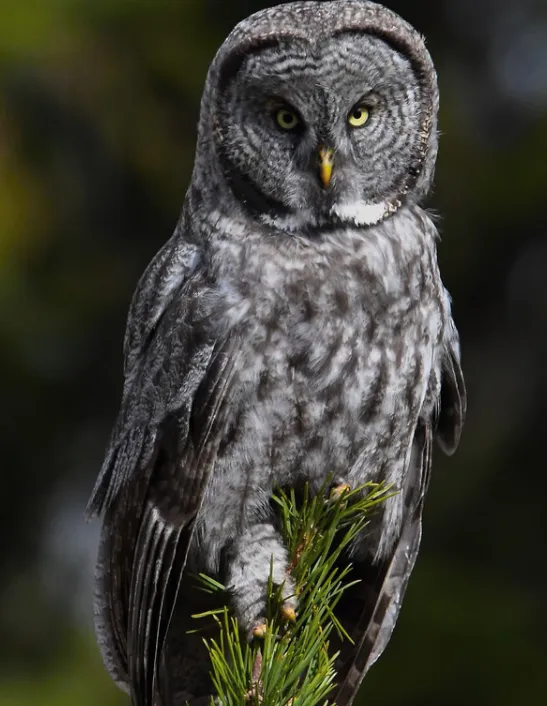
The Great Gray Owl is the largest owl in North America. It has gray and white feathers, and it is around 24 inches tall.
This owl lives in coniferous forests and prefers cold climates. The Great Gray Owl hunts at night and eats small mammals, birds, and insects.
The Great Gray Owl can be found in many different habitats throughout Alaska. It prefers the coniferous forests of the northern part, but it can also be found in other parts of the state. This owl feeds on a variety of small animals and insects.
It hunts mostly at night, but it can also be active during the day.
The Great Gray Owl is a beautiful bird that can be found in many different habitats throughout Alaska. It is the largest owl in North America and has gray and white feathers. This owl prefers cold climates and hunts at night. The Great Gray Owl feeds on small mammals, birds, and insects. It can be found in many different parts of Alaska.
Related post: Types of Owls in Indiana

Northern Saw-whet Owl
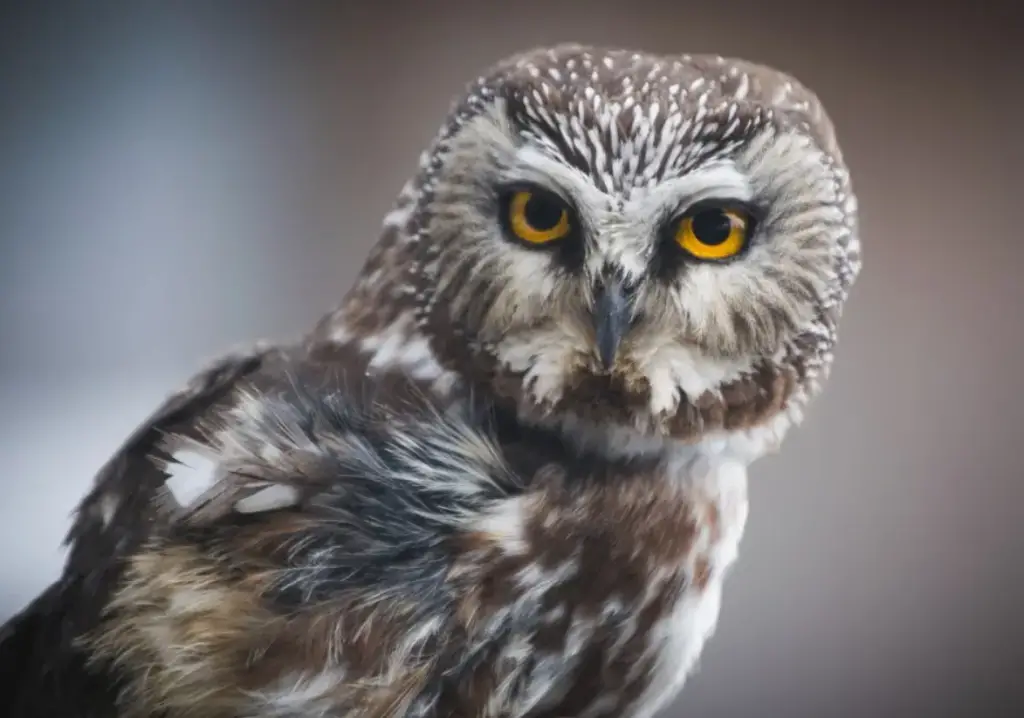
Northern Saw-whet Owl is the smallest owl in North America. They are about six to seven inches tall and have a wingspan of about 14 inches. Northern Saw-whet Owls are brown with white spots on their head and chest. They have heart-shaped faces with yellow eyes.
Northern Saw-whet Owls are found in Alaska, Canada, and across the United States. They can be found in coniferous forests that have large trees with dense foliage. They like to live near rivers or lakes.
Northern Saw-whet Owl eats small mammals, such as voles and mice; they also hunt frogs, birds, and insects. They hunt by sitting on a low branch near the trunk of a tree and waiting for their prey. When they spot something, they swoop down silently with wings folded and grab their food with claws or talons.

Northern Pygmy-Owls
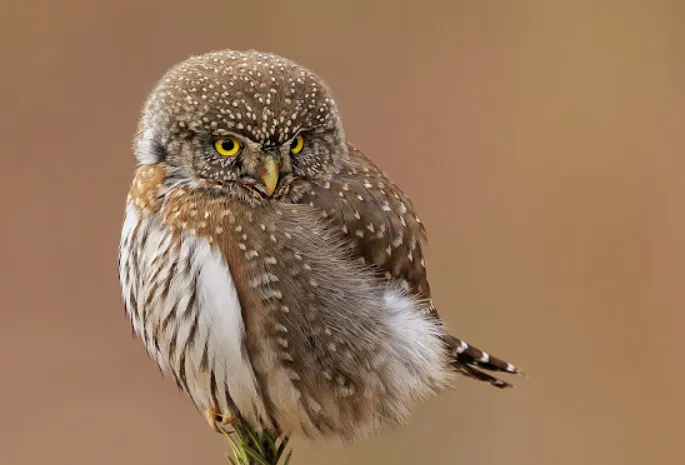
In Southeast Alaska, the Northern Pygmy Owl is the smallest owl in the area. They are about six to seven inches tall and have a wingspan of about fifteen inches. These owls are mostly brown with some light spots on their feathers. They have large eyes and a characteristic heart-shaped facial disk.
Northern Pygmy Owl is mostly nocturnal, meaning it hunt and feed at night. They eat a variety of prey, including small rodents, insects, and birds. They usually catch their prey by swooping down on it from a perch. Northern Pygmy Owl lives in forests and woodlands, although it can be found in urban areas as well.
They build nests in tree cavities or abandoned woodpecker holes, and the female lays up to seven eggs at a time. Both parents take turns incubating the eggs and feeding the young once they hatch. After about a month, when their feathers are grown out enough to fly, the young owls leave the nest to find their own territory.
Northern Pygmy-Owl is usually quite shy and secretive, so it can be hard to spot in the wild. If you’re lucky enough to see one, keep a safe distance and enjoy this beautiful little owl!

Boreal Owl
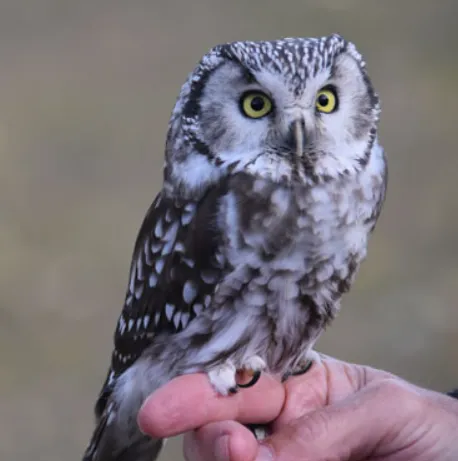
The Boreal Owl is a medium-sized owl that ranges in length from 15 to 20 inches and has a wingspan of between 36 and 40 inches. This owl is typically light gray or brown in color with darker markings on its chest and belly. The eyes are yellow and the beak is black. The legs and feet are feathered, which helps keep them warm in the cold temperatures.
The Boreal Owl is fairly common across Alaska, but it does have a range that extends into other parts of North America. This owl can be found in open coniferous boreal forest and taiga regions throughout its range. They prefer areas with large trees for nesting as well as for hunting.
The Boreal Owls primarily eat small mammals such as mice, voles, lemmings, and shrews. They will also eat small birds and insects when available. The owl sits on a perch at the edge of an open area in order to hunt its prey. This species is nocturnal and active during the night. They typically hunt in the early evening and then again around dawn.
The Boreal Owls are cavity nesters, using old woodpecker holes or natural cavities to build their nest. The female will lay between three and six eggs, which she will incubate for approximately 28 days while the male hunts for food to bring back to the nest. Once the eggs have hatched, both parents will bring food for their young until they are able to leave the nest on their own at about five weeks of age.
The Boreal Owl has not been considered a threatened or endangered species and its population across Alaska is fairly stable.

Short-eared Owls
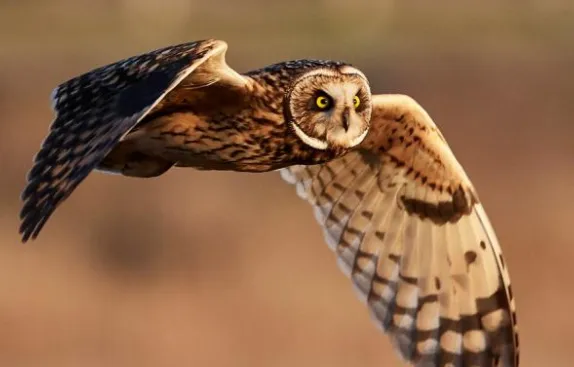
Short-eared Owls in Alaska can be found throughout much of the state and on a few islands. They are approximately 14 inches long with a wingspan of 35–43 inches and weigh about 11 ounces. This makes them smaller bird species than an average crow but larger than an American robin. Short-ears have yellow eyes, large facial disks, and long legs. They are brownish-gray above and white below with a dark stripe running down the center of their bellies.
Short-eared Owls hunt during the day and night, but they are more common during the daytime. They eat mostly small mammals such as voles, meadow mice, ground squirrels, and prairie dogs, but they will also eat birds, reptiles, amphibians, and insects. To catch prey, Short-ears hunt by hovering over open areas or perching on the tops of trees or poles. They plunge down to snatch their prey off the ground or pounce on it from a perch.
Short-eared Owls prefer to nest on the ground in open areas such as grasslands, tundra, and agricultural fields. Breeding pairs choose a nesting site together and will defend their territory against other Short-ears during the breeding season. They don’t make nests but lay their eggs directly on the ground or on a small mound of vegetation. Females lay between five and nine eggs and will incubate them for about 30 days. When the chicks hatch, both parents hunt for food to bring back to their nestlings. The young Short-ears stay in the nest together until they are almost fully grown.
Short-eared Owls migrate south each fall and return to Alaska in April or May after breeding season. They are common across much of North America and can be found in Alaska year-round, particularly on the mainland, but they may not breed every year.

Barred Owl
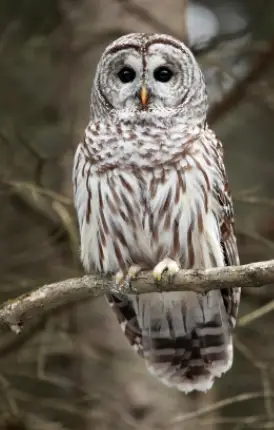
The Barred Owl is a medium-sized owl with brown and white stripes on its head. It is found in North America, from southern Canada to northern Mexico. In Alaska, the Barred Owl is found in forested areas throughout the state.
This owl has two distinct calls: a deep “hoo” and a series of “Who cooks for you?” Barred Owls are nocturnal hunters and eat mostly small mammals, such as mice.
This owl is very common in southern Alaska but rare in the northern part of the state. It can live up to 15 years in the wild. Barred Owls are considered a species of least concern by the IUCN.
The Barred Owl is an interesting owl to watch and listen to. If you’re lucky enough to see one in Alaska, be sure to take some time to enjoy this amazing bird!
Some other fun facts about the Barred Owl:
- The Barred Owl is the state bird of Missouri
- They are one of the few owl species that can rotate their heads 270 degrees
- Barred Owls sometimes mate for life. If one member of a pair dies, the other will often find a new mate.

Great Horned Owl
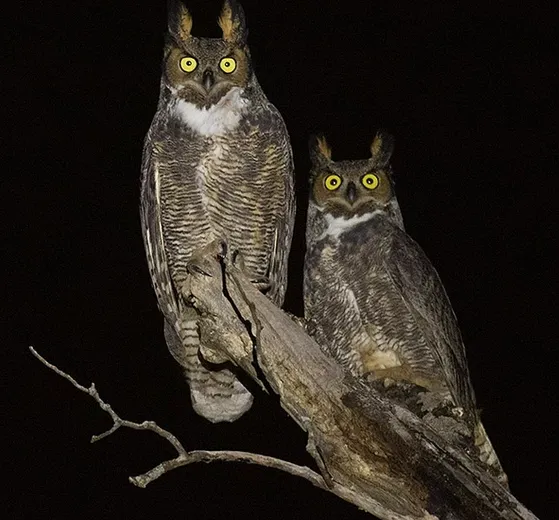
The Great Horned Owl is a large owl that can be found in North America. Great Horned Owls have brown feathers with white spots, and they have two prominent horns on their head. These owls are very adaptable and can live in a variety of habitats, including forests, deserts, and urban areas.
Great Horned Owls are the top predator in their habitat. They eat other birds like ducks and pheasants, as well as small mammals including rabbits, squirrels, prairie dogs, and mice. These owls hunt at night by flying silently through the air to catch prey unaware of its perch. Great Horned Owls are also known to steal food from other predators, like hawks and eagles.
Great Horned Owls are very territorial birds and will defend their territory against other owls or animals. They make a variety of hoots, barks, and screeches to communicate with each other. These owls are also known for their eerie screech, which sounds similar to a woman screaming.
Great Horned Owls typically mate in the winter and lay eggs from February through March. They build nests on top of tall trees or cliffs. The female owl lays up to three eggs, but only two chicks will survive because they compete with each other for food. The chicks will stay in their nest for about four weeks before they can fly on their own.

Great Gray Owl
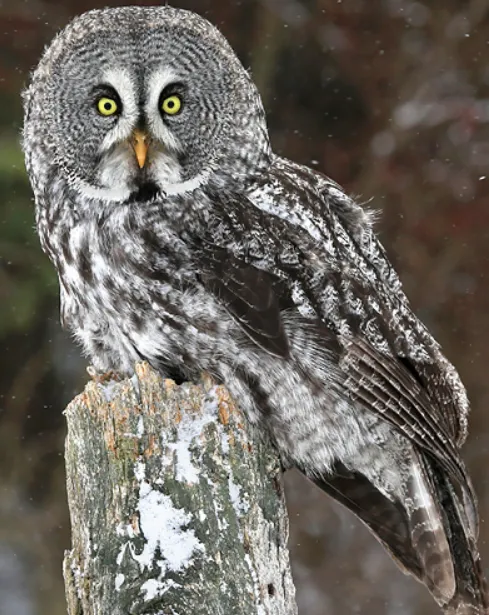
The Great Gray Owls are the largest and tallest owls in North America and can be found in Alaska. They are mostly nocturnal and hunt small mammals like rabbits and hares. They have very large eyes, which helps them see well at night, and they can rotate their heads 270 degrees to get a good view of their surroundings.
Great Gray Owls have a very distinct look with their large, fluffy plumage and dark eyes. They are usually silent birds, but they can make a hooting noise to communicate with other owls. Great Gray Owls in Alaska live in forested areas near open fields or meadows where they can find their prey.
They are considered threatened in the state, and their numbers are decreasing due to habitat loss. To protect them, Alaskans have built nesting boxes to attract Great Gray Owls.
If you’re lucky enough to see one of these beautiful birds in the wild, be sure to take a picture! They are truly majestic creatures.

Final thoughts
Alaska is home to some amazing owl species, including the Barred Owl, Great Horned Owl, and Great Gray Owl. These owls are all incredibly interesting birds with unique adaptations that allow them to survive in Alaska’s diverse habitats.

An avid ornithologist, zoologist and biologist with an unwavering passion for birds and wild animals.
Dr. Wilson’s journey in ornithology began in childhood and led him to obtain a Ph.D. in Ornithology from the prestigious Avian Research Institute. He has worked closely with renowned experts in the field and conducted extensive research and field studies globally.

